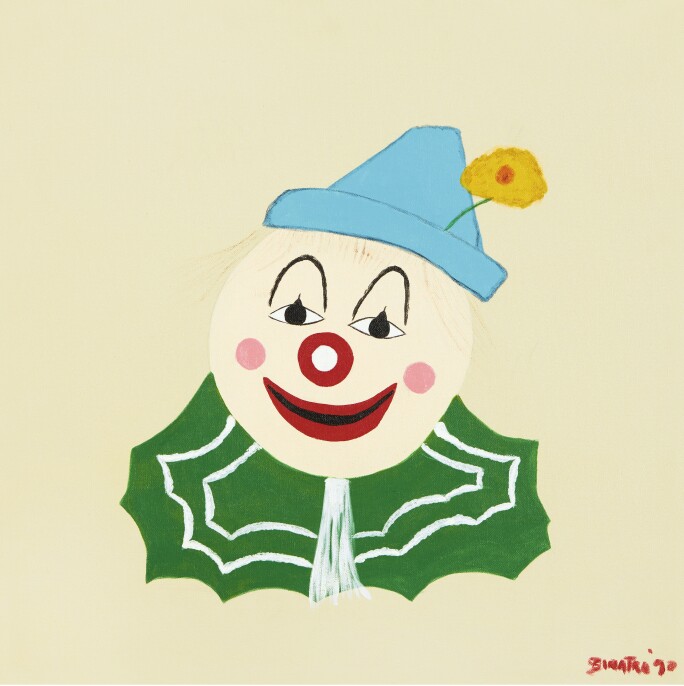Painting was a passionate interest and an essential creative outlet for legendary entertainer Frank Sinatra. Though he explored a number of styles over the years, the colorful and sometimes-tragic face of the circus clown returned again and again to his imagery. Sotheby’s upcoming auction Lady Blue Eyes: Property of Barbara and Frank Sinatra (6 December, New York) and Online sale (27 November–7 December) feature a fascinating selection of these paintings, which held important personal significance for the famed singer.
Soon after Barbara and Frank Sinatra's 1976 nuptials, Barbara was surprised to learn that, beyond his renowned musical gifts, her husband was also talented artist and a keen collector of art. He especially liked the Impressionists and the Cubists and emulated their styles, along with that of Japanese artists. He loved Miró and Picasso, Matisse, Leroy Neiman and David Hockney. He not only thought Tony Bennett was "the best singer in the business," but also a talented painter and bought several of his works.
Despite his enthusiasm for art, he was also particular about what he collected. Given his own career in entertainment, it is perhaps unsurprising that Sinatra especially enjoyed images of performers. A favorite artist of his was the Brooklyn-born Walt Kuhn who specialized in painting circus and vaudeville entertainers.
Barbara did not always share her husband's taste, having remarked, “He bought two paintings of Kuhn’s clowns, but I didn’t share his enthusiasm for them. I finally told him, ‘You know, Frank I don’t like mean art and I really don’t care to live with those clowns anymore.’ He didn’t say anything but within a day or two they were gone. Two gentle landscapes appeared instead, hung in their place.” Instead Barbara much preferred their Kuhn painting Girl With Turban (Zuleika), which reminded her of her own early showgirl days. According to her son, Robert Marx, “That was her favorite painting. She called it her flapper….She always said I'm never going to part with that." A vaudevillian circus flair characterized many works in their collection. Several of the Picasso ceramics the couple collected likewise possessed masquerade qualities, such as Masque from 1956.
As for his own painting practice, Sinatra often spent hours in his studio. Of his many images of clowns, Barbara recalled, “He called them self-portraits because I think he identified with the mask they wear—but his clowns were never sad or evil looking.”
As a painter, he was often meticulous, or as Barbara put it, “He was, of course, Charlie Neat when it came to painting; there was rarely any mess. He only ever had one “Jackson Pollock moment” that I knew of. I walked into his studio one day and found him reaching into pots of paint with his fingers and hurling it at the canvas. I don’t think he even knew I was there. Watching him lost in a world of his own creativity, I knew that art was another kind of therapy for him."








